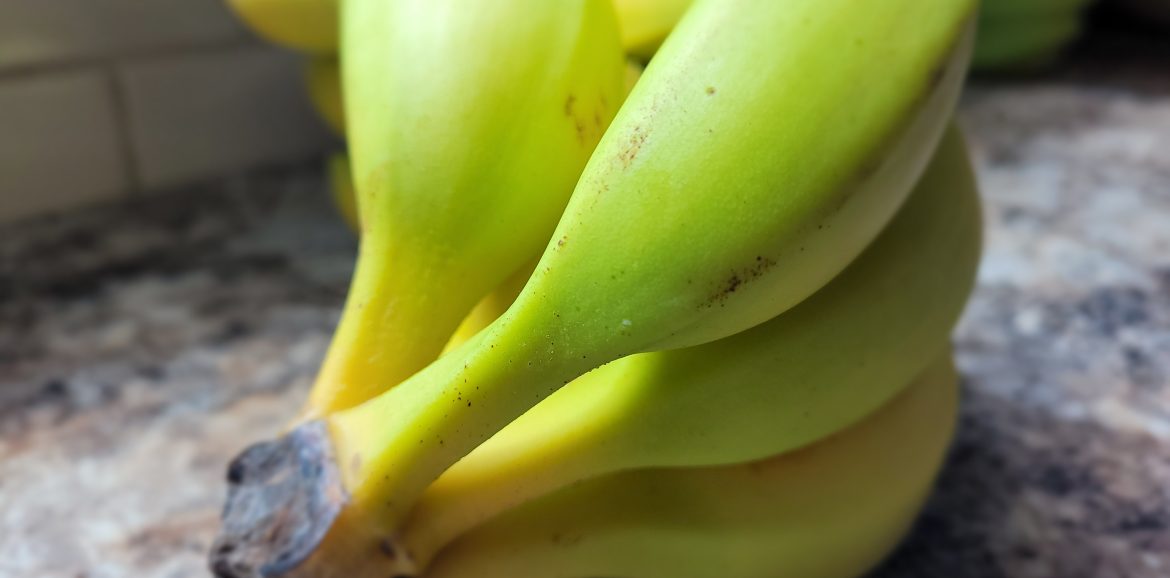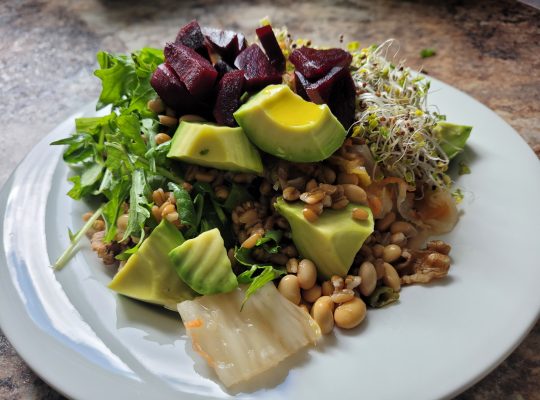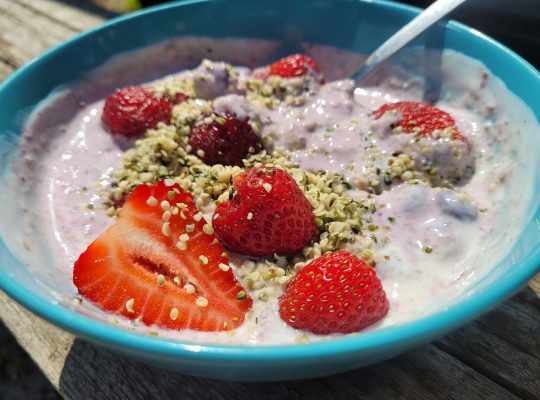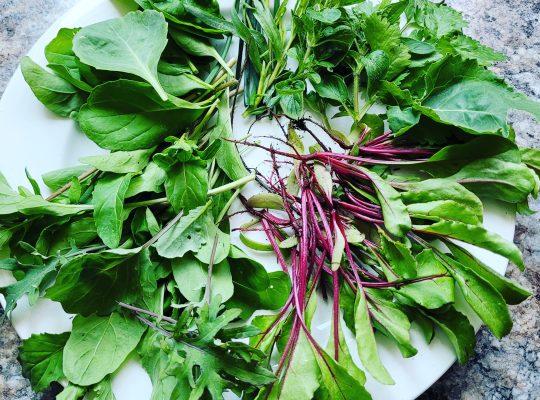It sounds like something your grandma would have used to keep the Sunday outfits prim and proper, doesn’t it?
It’s not that kind of starch. In fact, it’s the opposite. Resistant starch is a type of complex carbohydrate that acts as food for your friendly gut bacteria. It’s called resistant because it resists digestion by your stomach acids as well as digestive enzymes.
Instead, it makes its way all the way into the colon where the many (many) bacteria live and some of them feast on it. It doesn’t end there though.
It’s so very good for you
The by-products that result include short-chain fatty acids (SCFA), which you may remember as anti-inflammatory for us (body and brain!). Eating more sources of resistant starch will particularly increase the amount of a particular and very useful SCFA called butyrate. And further good food for more gut bacteria yet, and also for the cells in your colon. How amazing is that?
And there’s more to know about resistant starch yet:
- It’s low in calories
- It does not raise glucose levels and enhances insulin sensitivity
- It reduces the risk of colon cancer
- It softens and increases stool volume (yes, yes, it’s so important!)
Where to find more of it
Legumes. Their stellar feature is the high content of fibre, mostly soluble and …yes, resistant starch. If you’re not already having a steady rotation of legumes on the dinner table, I highly recommend it. Beans, peas, soybeans, lentils, chickpeas or garbanzo beans – they are tasty and versatile, and so worth including in your diet especially if you are struggling with blood glucose imbalance and insulin resistance. They are also a veritable longevity ally.
Green bananas…OK, OK, maybe they are a bit of an acquired taste, but can I tempt you with trying at least? Yes, they are sticky and leave a temporary strange feeling in your mouth but imagine your good gut bugs smiling faces as you eat green bananas. (Note: Please buy organic if possible.)
Here’s an interesting little fact about fruit in general. Sweetness has been added through years of cultivation of certain varieties. After all, humans love sweet, right? Often times, that enhanced feature is accompanied by a lower fibre content. Win-win, but also a loss. More fibre requires more chewing on our part, but that’s a good thing. Most of us do need a lot more fibre in our daily diet.
Cooked and cooled brown rice, potatoes, sweet potatoes, and pasta. Yep, when you cook starchy stuff and then cool them down, starch that would otherwise be easy to digest (by you) becomes the food that your bugs like. Just like that. Reheating will not destroy resistant starch. So cold pasta salad is better than hot pasta dish. That being said, pick some high fibre pasta to start with (my favourite is spelt, but you can choose garbanzo, lentil or bean-based pasta too).
More whole grains. Oats, barley, and sorghum for example. Cook, cool and enjoy. You can include them in lunch or dinner salads or add some berries and nuts for a yummy breakfast bowl.
Quick recipe on your way out?
Don’t let the list of ingredients scare you. I promise it’s quick to put together.
Lentil salad
Serves 8, or 4 – dinner and lunch the next day.
- Two cups of cooked and cooled green lentils
- One cup of cooked and cooled wheat berries (you can replace this with quinoa)
- 1 cup of grape tomatoes, halved (sun dried tomatoes in oil may work too)
- 1 ½ cups of broccoli florets, chopped
- 4 green onions, thinly sliced
- 1 big handful or arugula, chopped
- 1 can or artichoke hearts (in water), cut in quarters
- Fresh herbs of your choice: lemon thyme, cilantro, chives, or tarragon (I used thyme)
- Olive oil
- Lemon juice or balsamic vinegar to taste
- Salt and pepper to taste
Enjoy!







